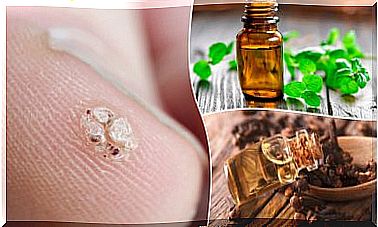Types Of Phimosis
Phimosis is a narrowing in the opening of the foreskin, which prevents the partial or total discovery of the glans. In particular, there are two types of phimosis: physiological and pathological ; the first is the most common.
The term “phimosis” comes from the Greek root “phimos”, which means “snout.” About 95% of baby boys are thought to have difficulty retracting the foreskin. However, at 3 years 90% of them are already physiologically normal.
The types of phimosis
The most general classification is made according to the cause that originates the condition. From this point of view, there are two types of phimosis: physiological, which is present from birth naturally; and the pathological, which derives from an infection or trauma.
There are also two other classifications: one based on the degree of foreskin retraction and another based on the degree of stenosis, that is, its narrowness. In the first case, there are two types of phimosis:
- Relative. When the foreskin is only partially retracted.
- Total. When there is no retraction of the foreskin.
Now, in the case of tight foreskin, there are three types of phimosis:
- Pointed. If the diameter of the hole is very small and can hardly be appreciated.
- Cicatricial or annular non-retractable. When the skin around the hole is thickened. These cases are usually preceded by an inflammation of the glans or balanoposthitis.
- Cancel. When the hole is narrow, but the condition does not match either of the previous two cases.

Physiological phimosis
The foreskin is the portion of skin that covers the glans and shaft of the penis. At birth, it is usually firmly attached or rooted to the glans. This makes it impossible to retract it, in most cases. It is a physiological condition that almost always resolves spontaneously.
Physiological phimosis is detected at birth or, in any case, before the age of 3 or 4. Sometimes it is visible to the naked eye, and other times it is only identified in the pediatric office. The most common is that this condition is reversed naturally, before 6 years. Only in 2% of males between 6 and 17 years of age does this anomaly persist.
On some occasions, physiological phimosis presents some complications such as the following:
- Balanitis. It is an infection that takes place in the area of the glans and is due to a lack of hygiene. The adhesion of the foreskin makes cleaning difficult and this favors the disease.
- Paraphimosis. It is an acute inflammation of the foreskin that causes obstruction. It can be treated with a maneuver, but in some cases it requires surgery.
Pathological phimosis
Pathological or secondary phimosis is a disease characterized by loss of elasticity in the foreskin, as a result of another pathology or trauma. It is called pathological because of its cause and because it generates problems such as difficulty urinating or limitation in sexual functions.
The main causes of pathological phimosis are the following:
- Physiological phimosis. 5% of cases of physiological phimosis do not resolve spontaneously and become pathological phimosis.
- Aging. Over the years, the skin loses flexibility and can even atrophy. This leads to the foreskin losing elasticity.
- Diabetes. Diabetes affects dermal tissues and is a common cause of pathological phimosis. In fact, any disease that alters these tissues can give rise to this problem.
- Infections. These can be caused by bacteria or fungi. In both cases they may lead to fibrosis, which, in turn, hardens and stiffens the skin.
- Traumatism. It corresponds to very rare cases. The disease occurs because in the healing process of the skin, after an injury, fibrosis occurs.
Typically, pathological phimosis affects only the foreskin and glans, but there are also cases in which it extends to the meatus and anterior urethra. The highest incidence of this problem occurs between 8 and 11 years of age. The complications that can arise are similar to those of physiological phimosis.

What to do in case of phimosis?
Phimosis must be treated by a doctor or urologist. In many cases, as in children, it is not necessary to resort to a treatment, since it resolves naturally with the passage of time. However, if it persists after 5 years of age, it is necessary to establish certain therapeutic measures.
The doctor may suggest the use of ointments for phimosis, such as betamethasone, which has anti-inflammatory, analgesic and antibiotic activity. It is also possible to improve it with some exercises or surgery.









